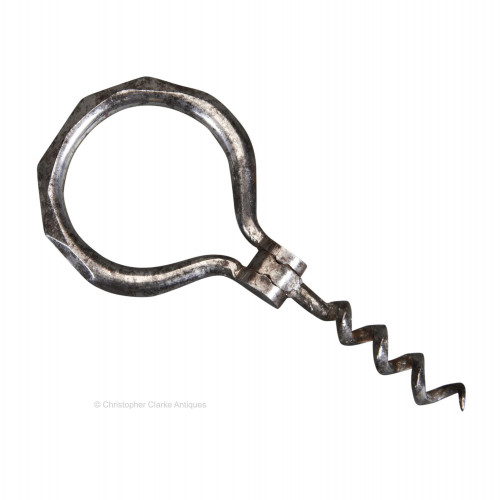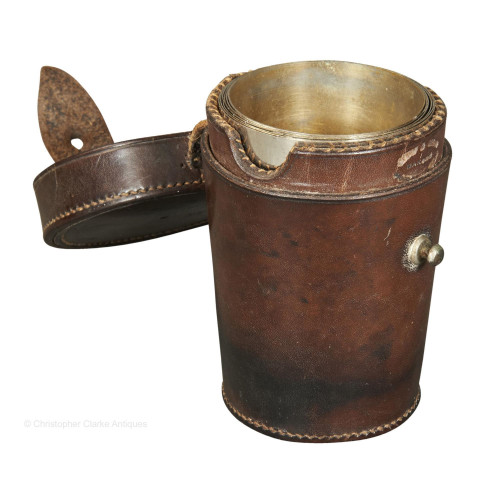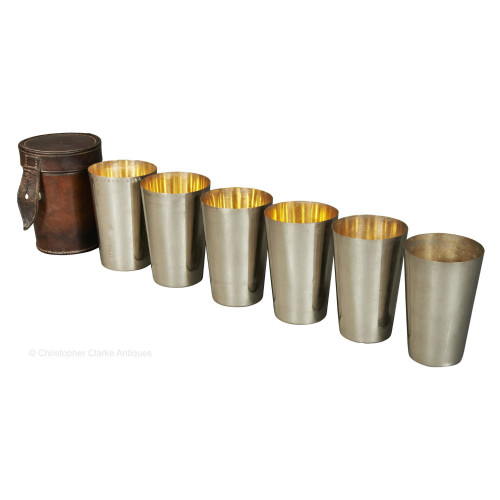Pint Lipped Rum Measure
Pint Lipped Rum Measure
82775
A copper Pint Rum Measure with tinning to the interior.
The Pint size is marked in capital letters to the front of the jug and a broad arrow mark is stamped to the skirt on one side. The handle has a brazed seam and it's fixed to the body with rivets. There is a small lump of lead to the inside of the lip and although this would have been used for stamping verification marks, none can be seen.
The practise of marking Lipped Measures with the broad arrow mark was stopped just before the start of the First World War. Circa 1900.
Rum and the Royal Navy
The tradition of issuing sailors with a daily ration of rum was born out of the propensity for their allowance of beer to spoil. This happened to Vice-Admiral William Penn's fleet in 1655 in the West Indies and rum was used an alternative. As it doesn't foul like beer would, it grew in popularity and became the established alcohol issued on board ship. In 1740 Vice-Admiral Vernon was worried about the effects of giving his crew half a pint of rum every day and ordered that it be diluted with a quart of water. The Admiral was known as Old Grogram after the waterproof grogram coat he wore and so the mix of rum and water was soon given the nickname Grog. Over the years the proportion of rum to water changed with the Grog becoming weaker each time. What didn't change though was the need for accuracy in measuring and issuing the rum, giving rise to the equipment need to do this.
The Royal Navy blended its own rum in its Victualling Yards at Deptford, Gosport and Plymouth and from there the casks or wicker covered jars were then sent out to the fleet. On board ship, the rum would be stored in the Spirits Room. Under the watchful eye of the Supply Officer, the rum would then be pumped out of a cask or poured from a jar into a Lipped Measure jug which was considered more accurate than a Round Measure. It would then be poured into a Barricoe or Breaker barrel using a funnel and carried onto deck to be mixed, in plain view and in front of a Witnessing Officer, with water in a Grog barrel. Round measures would then be used to allocate each mess's allowance, dependent on their number, to their Rum Bosun. It was poured into his Fannie tin which the Bosun would then take back to his mess to distribute.
The practise of giving sailors a daily ration of rum was finally stopped on the 31st of July 1970 or Black Tot Day as it became known. It was considered that rum and highly sophisticated military equipment was not a good mix
Dimensions:
Circa 1900
Copper
England
Pint with a Broad Arrow
Royal Navy and Rum
RELATED ITEMS




























